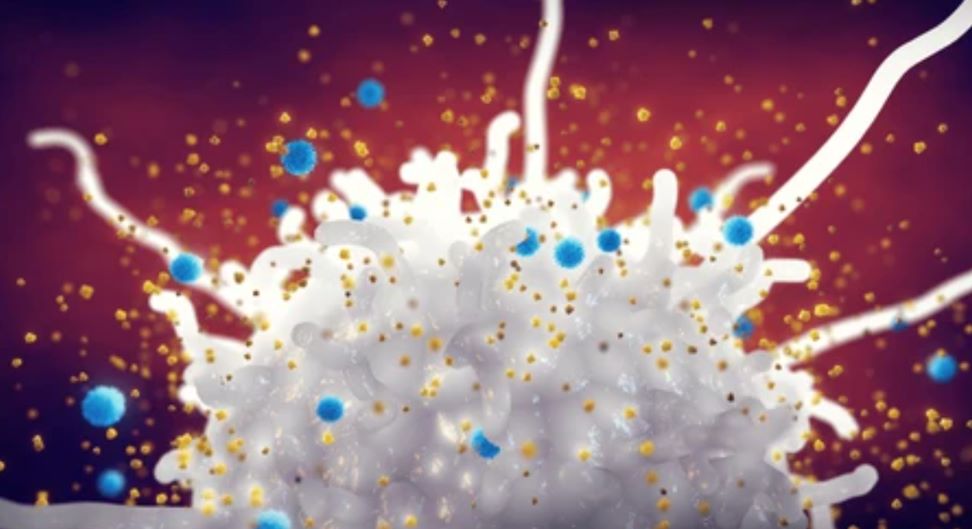Quantification of Cytokines
Cytokines, as pivotal mediators of immune responses, play a paramount role in the orchestration of inflammatory and immune processes. Their quantitative analysis provides crucial insights into the dynamics of immune regulation, offering valuable information for both research and clinical applications.
Importance of Cytokine Quantification
Accurate quantification of cytokine levels in biological samples holds immense value in deciphering immune-related phenomena. The ability to precisely measure cytokine concentrations enables the elucidation of immune cell activities, inflammatory cascades, and disease associations. By leveraging cytokine quantification, researchers and clinicians can gain valuable insights into disease pathogenesis, therapeutic responsiveness, and patient stratification strategies.

Methods of Cytokine Quantification
A multitude of methodologies have been employed to quantify cytokine levels, each possessing unique advantages and limitations. Techniques such as enzyme-linked immunosorbent assay (ELISA), multiplex immunoassays, flow cytometry, polymerase chain reaction (PCR)-based methods, and mass spectrometry have been pivotal in enabling accurate and sensitive cytokine quantification. The diversity of available methods offers researchers and clinicians the flexibility required to address the specific needs of their studies and clinical endeavors.
- Enzyme-linked immunosorbent assay (ELISA). ELISA is a widely used method for cytokine quantification due to its high sensitivity and specificity. It involves the use of antibodies specific to the target cytokine, enabling the measurement of cytokine concentrations in biological samples. ELISA is versatile and can be performed in a high-throughput manner, making it suitable for large-scale studies.
- Multiplex immunoassays. Multiplex immunoassays allow for the simultaneous quantification of multiple cytokines within a single sample. This method offers the advantage of conserving sample volume and reducing assay variability. By utilizing microsphere-based or planar array platforms, researchers can obtain comprehensive cytokine profiles, providing a more holistic view of immune responses.
- Flow cytometry. It enables the quantification of intracellular cytokine levels within specific immune cell subsets. By combining immunophenotyping with cytokine staining, flow cytometry provides insights into the functional activities of immune cells and their cytokine production profiles. This method is particularly valuable for characterizing immune cell populations in diverse biological samples.
- Mass spectrometry. Mass spectrometry-based approaches enable the direct measurement of cytokine protein levels in biological samples. This method offers high specificity and can provide quantitative information about cytokine abundance and post-translational modifications. Mass spectrometry allows for the comprehensive analysis of cytokine proteo-forms, enhancing our understanding of cytokine biology.
Workflow of Cytokine Quantification
- Sample collection. This involves collecting biological samples such as blood, plasma, serum, or tissue from the subject of interest.
- Sample preparation. The collected samples are processed to extract the target analytes, which in this case are cytokines. This may involve such as centrifugation, filtration, and possibly extraction techniques to isolate the cytokines from the sample matrix.
- Quantification assay. Various methods exist for quantifying cytokines, such as ELISA, multiplex assays, and flow cytometry. Each method has its specific protocol and requirements. The general principle involves using specific antibodies to capture and detect the cytokines of interest.
- Standard curve preparation. To accurately quantify the cytokines in the samples, a standard curve is typically constructed using known concentrations of cytokine standards. This allows the conversion of signal intensities from the assay into cytokine concentrations.
- Data analysis. The data obtained from the quantification assay is then analyzed, often using software specific to the assay platform. The cytokine concentrations in the samples are determined based on the standard curve and various quality control measures are applied to ensure the accuracy of the results.
Clinical Applications of Cytokines Quantification
The clinical applications of cytokine quantification are diverse and profound. From the identification of cytokine biomarkers associated with infectious diseases, autoimmune disorders, and cancer to the monitoring of treatment responses and disease progression, cytokine quantification has emerged as a powerful tool in clinical diagnostics and therapeutic decision-making.
- Disease diagnosis and prognosis. Cytokine quantification has been instrumental in identifying cytokine profiles associated with specific diseases. By measuring cytokine levels in biological samples, clinicians can gain insights into the underlying pathophysiology of diseases, aiding in the establishment of diagnostic biomarkers. Furthermore, cytokine profiles can serve as prognostic indicators, guiding clinicians in evaluating disease severity and predicting clinical outcomes.
- Inflammatory disorders. In conditions characterized by dysregulated immune responses and inflammation, such as rheumatoid arthritis, inflammatory bowel disease, and psoriasis, cytokine quantification provides valuable information for disease monitoring and treatment decision-making. Monitoring cytokine levels can help assess disease activity, and response to therapy, and identify potential targets for immunomodulatory treatments.
- Infectious diseases. Cytokine quantification plays a crucial role in understanding the host immune response to infectious pathogens. By measuring cytokine levels during microbial infections, clinicians can assess the nature of immune activation, distinguish between different stages of infection, and evaluate host immune defense mechanisms. Additionally, cytokine profiles can aid in diagnosing and differentiating various infectious diseases.
Emerging Technologies and Future Directions
Advancements in cytokine quantification technologies continue to catalyze groundbreaking insights into immune regulation and disease dynamics. Emerging methodologies, such as microfluidic platforms, single-cell analysis, and spatial profiling, are revolutionizing the field by enabling intricate and high-resolution cytokine measurements. The future of cytokine quantification holds exciting prospects for personalized cytokine profiling, multi-omics integration, and the development of novel therapeutic strategies.
Creative Bioarray Relevant Recommendations
Creative Bioarray offers a large variety of GMP-grade cytokines. ActoFactor™ GMP cytokines are manufactured and tested in compliance with relevant GMP guidelines. ActoFactor™ GMP Cytokines combine quality and safety with regular production and quality control. Furthermore, these products are widely used in the fields of cell therapy, pre-clinical research, and drug development. We are always committed to providing customers with high-quality products and services.
| Cat. No. | Product Name |
| CSC-CTK0004G | ActoFactor™ Human Interleukin 2 |
| CSC-CTK0008G | ActoFactor™ Human Tumor Necrosis factor |
| CSC-CTK0009G | ActoFactor™ Human Fms-like tyrosine kinase-3 |
| CSC-CTK0012G | ActoFactor™ Human basic Fibroblast growth factor 2 |
| CSC-CTK0014G | ActoFactor™ Human Interleukin 12 |
| CSC-CTK0034G | ActoFactor™ Human Interleukin 6 |
| CSC-CTK0054G | ActoFactor™ Human Interleukin 15 |
| CSC-CTK0070G | ActoFactor™ Human Interleukin 1α |